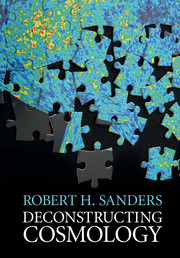Book contents
4 - Precision Cosmology
Published online by Cambridge University Press: 12 October 2016
Summary
Standard CDM Cosmology
Shortly after the discovery of the CMB, Jim Peebles, closely followed by Robert Wagoner, William Fowler and Fred Hoyle, realized that the measured abundances of those light elements produced in the first few minutes of the Big Bang were sensitive probes of the density of the Universe, or at least the density of ordinary protons and neutrons that comprise most of the matter that we can directly observe – baryonic matter. This is particularly true of deuterium (a hydrogen nucleus with a neutron as well as a proton) and helium-3 (a helium nucleus consisting of two protons and only one neutron, rather than the usual two). If the primordial cosmic abundances of these isotopes could be precisely measured, then this would comprise a probe on the number of baryons relative to the known number of black-body photons – usually designated η; that is to say, these measured abundances would constitute a “baryometer.”2 The abundance of helium, the second most abundant element after hydrogen, is actually rather insensitive to the density of baryons, but is much more sensitive to the expansion rate of the Universe in the first few minutes after its origin. This depends upon the number of relativistic particle species such as neutrinos – the more species, the faster the expansion rate and the higher the helium abundance (recall that free neutrons have a lifetime of about 10 minutes; with a higher expansion rate more neutrons are available to form helium nuclei at temperatures low enough to avoid immediate photo-destruction). The expansion rate also depends upon more speculative possibilities such as deviations from standard gravity (i.e., a higher or lower constant of gravity in the early Universe). That is why it is said that the measured helium abundance is an effective chronometer.
Measuring the pristine abundances of helium or of the trace isotopes deuterium or helium-3 is a tricky business because of subsequent processing of these elements in stellar interiors – so-called “astration.” Helium and helium-3, for example, are produced in stars but deuterium is destroyed. So how does one determine the primordial unprocessed abundances of these isotopes?
- Type
- Chapter
- Information
- Deconstructing Cosmology , pp. 37 - 48Publisher: Cambridge University PressPrint publication year: 2016



